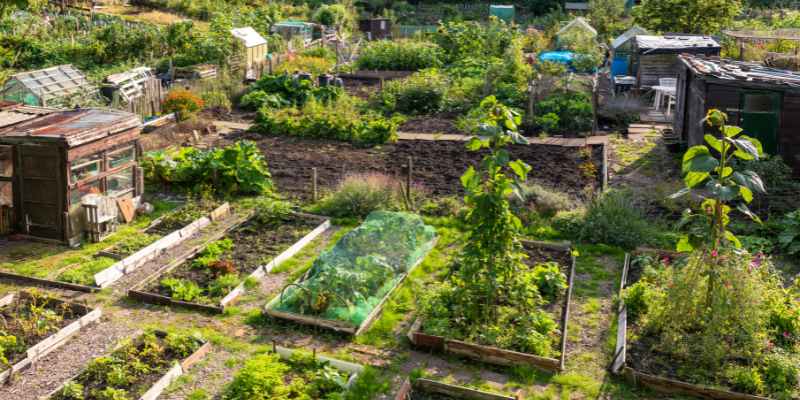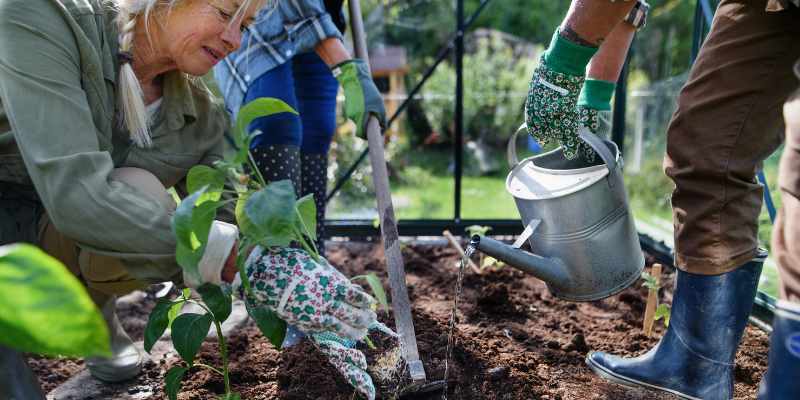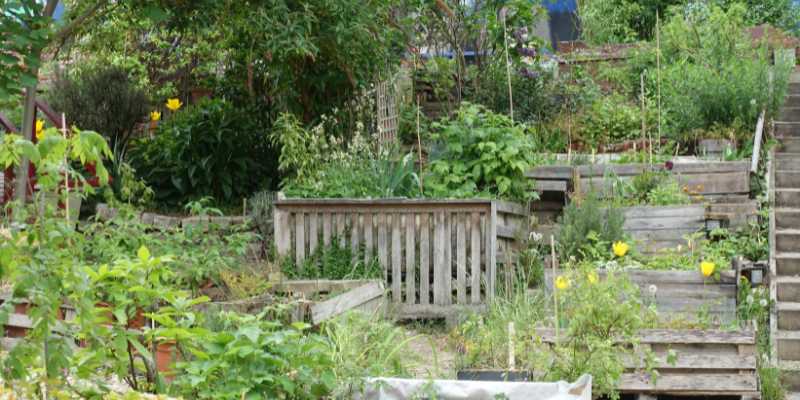Shared gardens are increasingly capturing attention in a world where sustainability and solidarity are at the heart of social and environmental concerns. These green havens within our cities are not just spaces where soil meets seed. They symbolise a circular economy and a thriving social cohesion. Growing a vegetable becomes much more than a simple gardening act; it is a strong gesture that contributes to a collective effort, economically beneficial and deeply rooted in the social fabric. Beyond their agricultural purpose, shared gardens embody a more conscious, responsible, and supportive way of life. In this article, we will explore the multiple facets of these gardens that enrich our lives as much as our plates, highlighting their economic and social advantages.

What do we mean by "shared gardens"?
A shared garden is a plot of land cultivated and maintained collectively by a group of people. It is a place where everyone can contribute, whether by gardening, sharing knowledge, or creating a convivial space. Shared gardens are not just spaces for cultivation; they are also places for socialisation, environmental education, and community involvement.
The rise of urban agriculture in recent years reflects a growing need to reconnect citizens with nature and food. Cities are becoming increasingly dense, and green spaces are becoming scarce. Urban agriculture addresses this issue by allowing the local production of quality fruits and vegetables. It also contributes to biodiversity and the overall well-being of the community.
The re-emergence of shared gardens in this context is therefore not insignificant. They reflect a collective awareness of the importance of sustainability and equity in our relationship with the environment. Shared gardens, through their collaborative dimension, are also excellent vehicles for education. They allow for the transmission of ecological gardening techniques, raise awareness of environmental issues, and create social bonds.

What are the economic and social benefits?
Shared gardens are an exceptional lever for action both economically and socially. From an economic perspective, they primarily allow for cost-sharing. The initial cost of a garden can be quite high, considering the purchase of seeds, tools, and gardening materials. By pooling these expenses, each participant reduces their financial burden. Furthermore, the shared garden promotes a form of food self-sufficiency. Growing your own vegetables and fruits allows for savings on the food budget while having access to fresh, local products.
However, the benefits of shared gardens are not limited to the economic aspect. They are also a fantastic tool for social cohesion. In a shared garden, social barriers fall, and a true community spirit can emerge. The exchange of skills and know-how multiplies, creating an environment of learning and mutual support. This naturally leads to better environmental education for all participants. Learning to cultivate sustainably, respect nature's cycles, and value compost are all valuable knowledge that spreads within the community.
Psychological well-being is another aspect not to be overlooked. Contact with nature has proven calming and anti-stress virtues. Gardening is often seen as a meditative activity that allows one to refocus and take a break from the hectic pace of daily life.
In summary, shared gardens are a smart investment for individuals and communities. They offer a tangible response to several contemporary issues such as food insecurity, social isolation, and disconnection from the environment. Thus, they represent much more than a simple pastime; they are the fertile ground for a more sustainable and supportive way of life.

How to create or join a shared garden?
Creating or joining a shared garden is a rewarding adventure that begins with an idea and is realised through a series of thoughtful and coordinated actions. The first step, whether creating or joining an existing garden, is to seek information. The internet is an invaluable resource for finding gardens near you or understanding how to start one. Social media and dedicated forums are also good ways to connect with like-minded individuals.
If you decide to create a shared garden, location is one of the most crucial elements. Finding a suitable plot is essential for the project's success. Once the land is identified, the next step is to address regulations. Consult local authorities to understand the administrative formalities, such as necessary permits or urban planning regulations. Subsequently, creating an association or an organised group can facilitate the management of the garden, particularly for task and cost distribution.
Funding is another point to consider. Funds can be raised through grants, donations, or even through member contributions. Involvement from local residents can also be a way to gain material and human support.
Once these more technical aspects are settled, the design of the garden can begin. It is important to plan the cultivation areas, pathways, and communal spaces to create a pleasant and functional environment. You can seek everyone's input for a democratic and inclusive management of the project.
For those who prefer to join an existing shared garden, the process is of course simpler, but no less engaging. Contact the organisers, participate in a few meetings or activities to immerse yourself in the atmosphere of the place and understand its functioning. Each garden has its own rules, and it is important to respect them to integrate harmoniously into the community.
In both cases, communication and commitment are the keys to success. A shared garden is a collective project that requires a certain degree of responsibility, respect, and passion for the land and the community. Keeping these values in mind, you will be well-equipped to make your shared gardening adventure a successful and enriching experience.

































Comments